ASUS Booth Tour at CES 2016: 10G Switches, External GPU Dock, USB-C Monitor and more
by Ian Cutress on January 19, 2016 9:00 AM ESTRepublic of Gamers
As mentioned on the first page of this piece, ASUS is celebrating their ‘10 Years of ROG’ during 2016, and while I imagine the big party will be at Computex later this year, there was still a few things to show off for CES. First up is this little number, made entirely of Lego.
If you can make it out, there is an ROG Maximus VIII Impact motherboard in the middle there (read our review at this link) but it still needed a power supply, CPU cooler and the rest to be an actual PC. Nonetheless, I’m all for interesting displays like this.
For actual products already in the channel or coming to market, here’s a 21:9 G-Sync enabled monitor, the ROG Swift PG348Q:
If 2015 did not have enough 21:9 panels, it would seem that 2016 is starting off on the right foot. This one will hit in at 100 Hz while still showing a 3440x1440 resolution and all the bells and whistles of a fully adjustable monitor. There’s an added extra, if you happen to be showing it off:
It’s a small touch, but interesting.
ASUS has been selling ROG systems for a while now, and while the US is technically not the strongest market for this, they do have some sales and the GT51 here is another product in that line.
The specifications are perhaps pretty obvious: Core i7 Skylake processors with up to GTX TITAN X graphics in SLI, lots of storage, fast memory and USB 3.1 in Type-C format. What got my interest here is the ROG Band also on show:
Excuse the low quality image (it turns out all of my images were bad for it), but the idea here is a simple device that will lock/unlock the machine similar to a keyless car system, but the wristband will also allow simple overclocks to be activated when requested. That perhaps sounds gimmicky at best, or perhaps the lock/unlock might not be for the security conscious, but anything that saves a few seconds here and there is going to be of interest somewhere down the line.
Last up is the ROG Claymore keyboard. It comes out as it looks – a full RGB enabled mechanical keyboard with Red, Brown, Blue or Black switches in that ROG/Mayan aesthetic. The keypad is able to switch sides when needed. The construction and feel during my few moments of use felt good, with special button allocations for overclocking when using the software, as shown in the video:
Unfortunately there are no media keys or macro keys, although given that there is a left-right modular system, I would suggest to ASUS that a media/macro panel should be made so it can be placed on either side similar to the keypad.


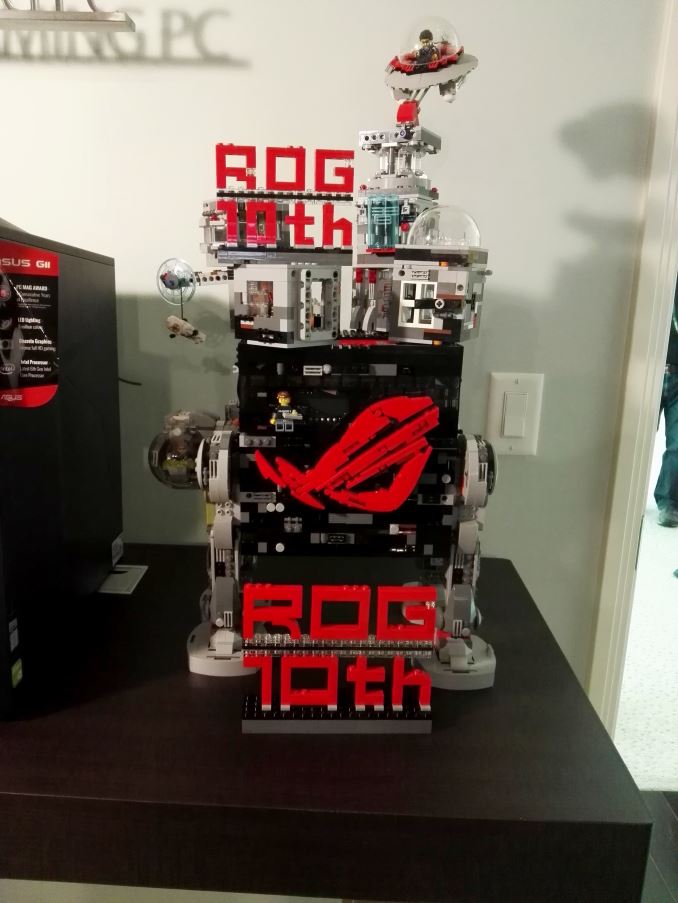
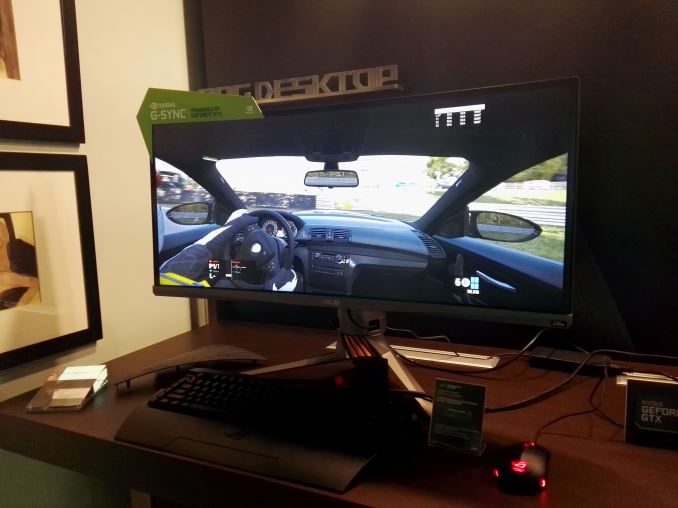
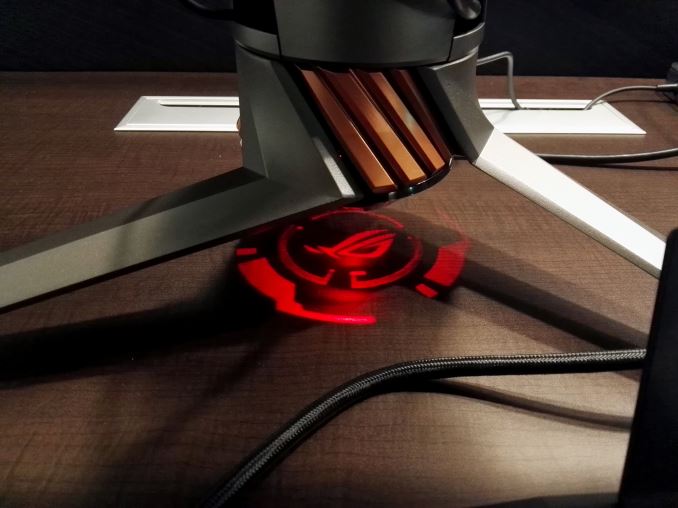
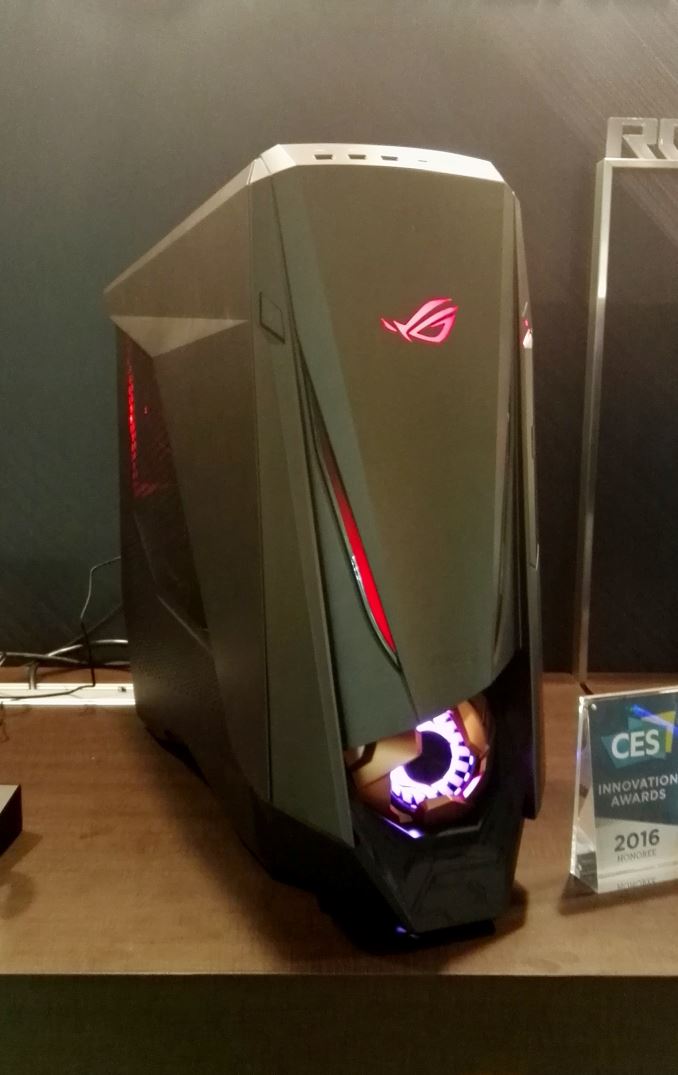
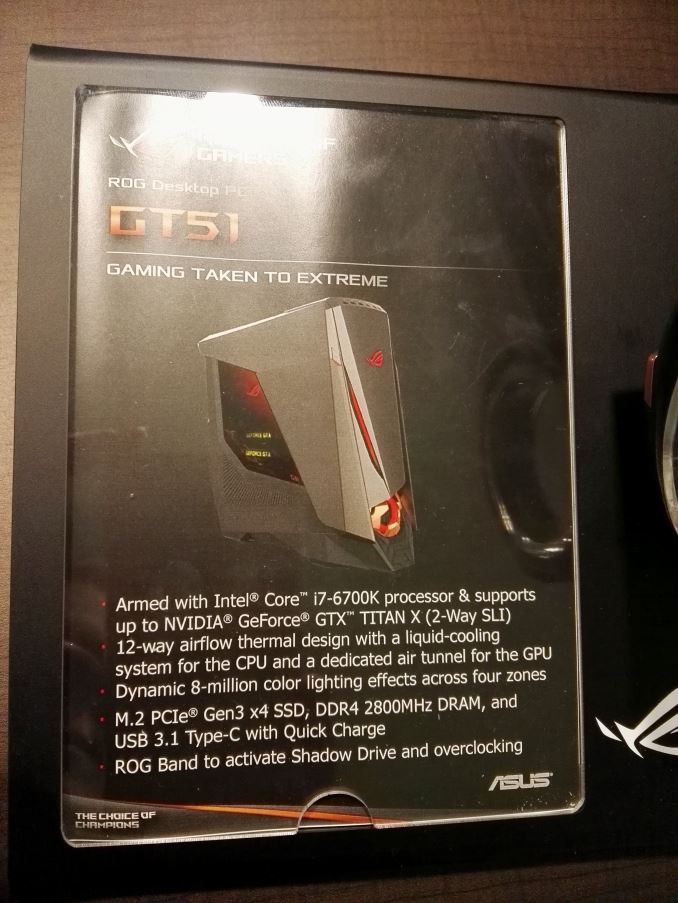
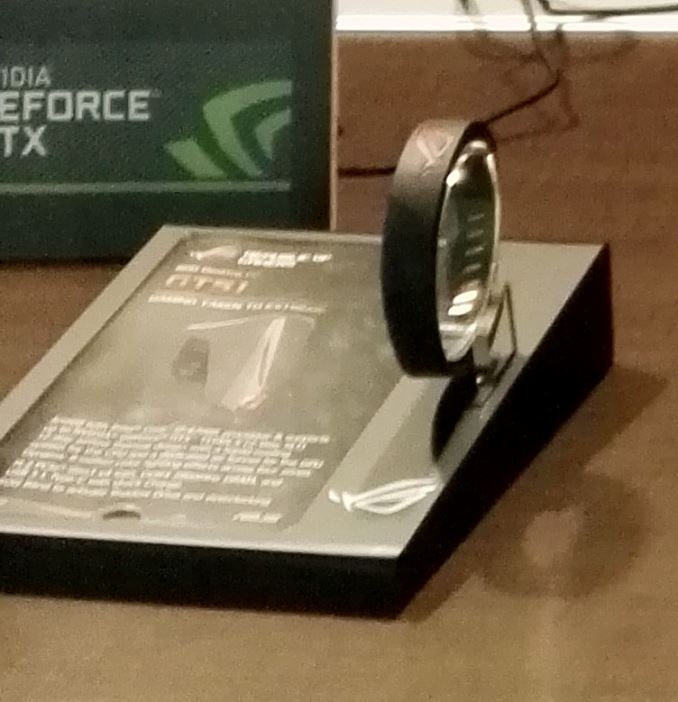
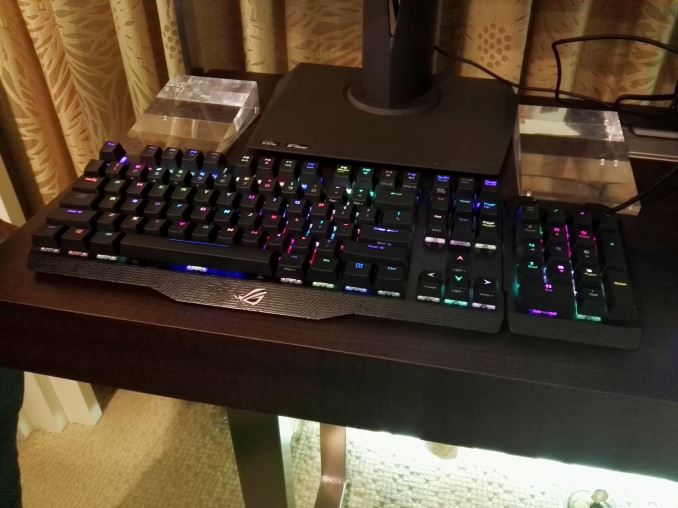








50 Comments
View All Comments
WhisperingEye - Wednesday, January 20, 2016 - link
Panzerknacker- I don't understand why you replied to a phone question with a router question.Xajel - Sunday, January 24, 2016 - link
The main reason behind this is that most consumer devices hardly sustain the 1Gb connection.. only some extreme consumers like heavy media servers at home that serves multi 4K stream...so for a consumer, 1Gb is enough, and there's no devices that can make use of 10Gb for the consumer...
Some advanced/enthusiast users uses a Link Aggregation connection as a backbone of their network ( NAS -> Switch <- HTPC/Main PC ) so these can serve multi streams in the same time without any drops... but that is rare as 1Gb is enough for most users already...
Maybe pro users, like pro video editing needs these 10Gb links, but it's already rare situation to see this in a home user, a person with the need for 10Gb ethernet is already using high-end workstations with professional systems.. so it's not a consumer oriented product any more...
Personally I thought about having 10Gb as a backbone for my home network just to be future proof.. but after looking again.. I found it too expensive, and I can make 2x 1Gb Link Aggregation which much less cost and still serve me well for few years a head ( NAS + HTPC + router + Switch all with LA connections )
Lieuchikaka - Thursday, June 2, 2016 - link
http://mavangvn.vn/ma-vang-dien-thoai/dien-thoai-s...Lieuchikaka - Thursday, June 2, 2016 - link
http://mavangvn.vn/ma-vang-dien-thoai/dien-thoai-s...rhx123 - Tuesday, January 19, 2016 - link
Using their own standard instead of TB3 just screams of Vendor Lock-In, especially when TB3 can do 36gbps over an active cable.SirKnobsworth - Tuesday, January 19, 2016 - link
According to Tom's, they actually require 2 type C cables too.Alexvrb - Tuesday, January 19, 2016 - link
Your statement is ironic to me because thunderbolt is itself... a proprietary standard. For external graphics we really need a standardized "Type G" port or something that can provide all the bandwidth by itself. But that will probably never happen. For that matter, even a much tamer enclosure hosting "only" up to 150W GPUs would still be a huge boost for a laptop.nathanddrews - Tuesday, January 19, 2016 - link
So... what are the implications of USB-C displacing HDMI and DisplayPort connectors? I know that it technically is DP over alternate mode, but it's clearly very popular. It seems like many new displays have it built in. Adaptive Sync? Latency? Would there be a penalty of some kind for sending video output through the USB bus instead of directly from the GPU?My only experience is with a first-generation USB display that sucked immense balls.
SirKnobsworth - Tuesday, January 19, 2016 - link
It's just a multiplexer that sends the signal over unused pins. You only get two lanes (as opposed to the usual 4), but that's fine as long as you don't need 4k60.Ryan Smith - Tuesday, January 19, 2016 - link
You can get 4 lanes of DP. It just uses up all the differential pairs, so you have to give up USB 3.x to get it (which is why DP 1.3 is going to be such a big deal).